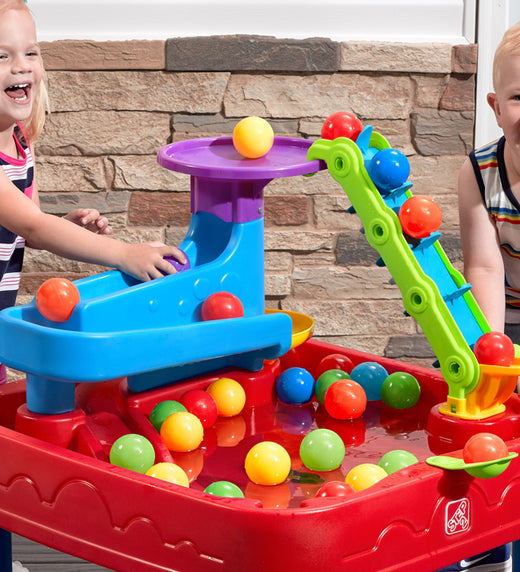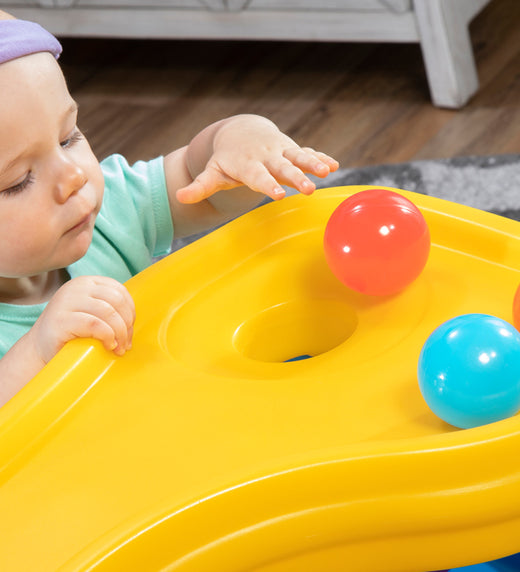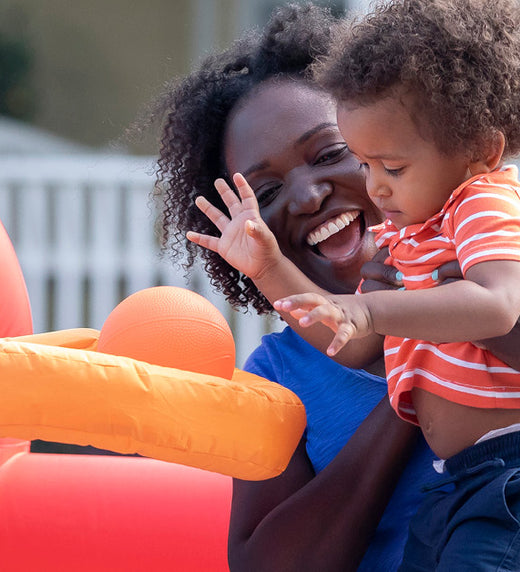
By Dr. Keili Mistovich, MD, MPH
Summer is a time for backyard barbecues, relaxing days at the pool, camping trips, baseball games, and vacation road trips to name a few. It’s a time for fun and families, friends and festivities. After this past year of 2020, to say that we have all earned a vacation is quite the understatement!
As a pediatrician and parent, one of my favorite parts of summer is getting kids outside and active—kids of all ages get to have fun and simply be kids.
With summer fun comes summer responsibility and keeping your family safe. Today is a great time to make a mental note of some key safety tips to make sure you can enjoy your summer to the fullest!
Water Safety for Kids
Days at the pool, the beach, or at the lake are a favorite summer activity. Swimming is great exercise for kids and allows them ample opportunity for imaginative play. If you aren’t able to get to a pool or beachside, water toys, such as sprinklers and water tables are perfect for even the littlest of our fish!
Water Safety Tips
Learning how to swim is a life skill. I encourage my patients’ families to ensure that all members of the family are able to swim. This includes parents who may have never learned; it’s never too late, and it could save a life!
Fun in the water is a great way to make memories with your littles ones, but having the skills to remain safe is invaluable. Each year, approximately 4,000 drowning deaths are documented in the United States. Over 1,000 of these are children under the age of 19 years, and approximately 350 of these are children under of the age of 5 years old. Of these young children, many of these deaths are in swimming pools. For children under the age of 1 year, the most common location for drowning is in the bathtub.
It’s of the utmost importance to ensure that children are never left unattended in the bathtub or swimming pool—even for a minute. It only takes minutes for a child to drown. Keep your eyes on your little ones to ensure everyone is safe, happy, and having fun.
Any child who is unable to easily swim the length of a swimming pool and know how to tread water for several minutes should be wearing a US-Coast-Guard-approved life jacket, unless under the direct supervision of an adult.
For families who have swimming pools at their homes, ensuring that the pool is properly fenced, gated, and covered when not in use is mandatory to ensure the safety of your children as well as other children in the neighborhood who may wander into your yard.
Many families will ask about infant swimming classes. Research has shown that formal swimming lessons reduce the risk of fatal drowning. In fact, a recent study showed that drowning deaths have increased over the past year. This increase may be a result of fewer children taking swimming lessons during the pandemic.
I recommend that children start swimming lessons as early as possible. It’s absolutely essential to do your research and find a highly rated swimming school approved by the American Red Cross®.
Sun Safety
Summer means lots of time out in the sun and soaking up our necessary and important daily dose of vitamin D! Endless hours of play also means endless hours for kids to exercise their bodies and minds! Pull out your kids’ favorite Step2 slides and coasters, run towards activities galore at the playground, or enter into an imaginary world in your child’s well-loved Step2 playhouse. Luckily, many Step2 toys come with umbrellas to keep your little ones shaded from the sun!
But remember: Sun safety is important for children (and adults!) of all ages. While often not visible for many years, skin damage starts when we’re young. Our job as parents is to teach our kids to be kind to their skin from an early age.
A Few Key Sun-Safety Tips:
- Avoid the harshest hours of the sun: Remember that the sun is the harshest during the middle of the day, so it’s important to try to avoid direct exposure from the sun between the hours of 10am and 4pm.
- Dress properly: Keep in the shade when possible and wear protective clothing, such as wide-brimmed hats, sunglasses, and long-sleeve swim shirts and pants.
- Apply sunscreen: The American Academy of Pediatrics recommends that sunscreen be applied to children over the age of 6 months every 2 hours when in the sun. Sunscreen should be broad spectrum (i.e., UVA and UVB protection) and be a minimum of SPF 15—ideally SPF 40-50—and reapplied every 2 hours.
- Sunburns still happen on cloudy days! Remember: The sun’s ultraviolet rays will still penetrate the clouds on overcast days. These are often some of the most dangerous times to be outside, since many people don’t feel the sun and are more likely to go for longer periods without sunscreen.
For babies under the age of 6 months, avoiding direct contact with the sun and using protective clothing is your first line of defense. However, if young babies do need to be in the sun, applying some sunscreen to uncovered areas, such as the face and hands, is necessary. Use a product with zinc oxide as the major ingredient instead of sunscreens that contain chemicals to absorb the UVA and UVB rays; sun block containing zinc oxide reflects the sun.
Pro tip! Zinc oxide is the major ingredient of diaper rash cream as well, so if you’re in a pinch, you could even apply your child’s diaper rash cream to their face and hands to avoid a sunburn.
Hydration and Heat
Drink water—and drink lots of it! While adequate hydration is important year-round, it’s especially critical to ensure that your kids are drinking plenty of water during these hot summer months. If your kid is like most, drinking water is often not their top priority while having fun in the sun.
A Few Tips for Staying Hydrated in the Heat:
- Take breaks: Make sure that your kids stop playing at least once an hour to get out of the sun and drink some water.
- Pool timeouts: When kids are swimming in the pool, the heat can be extra deceiving. Most public pools will take a break for 15 minutes every hour, so make sure that you’re doing the same at home or at the beach. You can even blow a whistle to let your children know it’s time for a break. Have them get out of the pool, drink some water, and eat a healthy snack. Reapply the sunscreen, and once the 15 minutes is up, it’s back to pool fun they go!
- Play sports in the evening: If possible, it’s wise to reserve sports for evening or morning activities. The sun is less intense at that time of the day, and, thus, kids are less likely to get dehydrated and overheated.
-
Monitor for heat exhaustion: Too much sun can be dangerous and lead to symptoms of heat exhaustion or, even more dangerous, heat stroke. Symptoms of heat exhaustion include:
- Rapid heart rate
- Excessive sweating
- Nausea/vomiting
- Headache
- Dizziness
- Fatigue
- Fainting
If your child experiences any combination of these symptoms, make sure to move them to a cool location and have them drink a cold, salty beverage, such as a sports drink. These symptoms should resolve within 30 minutes. If symptoms persist or if your child has any change in their mental status, make sure to call your doctor urgently.
Sun Safety for Your Little Ones
My patients routinely hear me say, “Safety first!” Keep these tips at the forefront of your mind to ensure that you and your kids have a fun, enjoyable, and safe summer!
How do you keep your little ones protected in the sun? What are their favorite sunny-day activities? Comment below!
Dr. Keili Mistovich, MD, MPH, is a mom, pediatrician, and fierce advocate for children. She earned a Doctor of Medicine degree and Masters of Public Health from the University of Pittsburgh School of Medicine. Dr. Keili graduated from the Pediatric Residency Program at UPMC Children’s Hospital of Pittsburgh and was on the clinical faculty at Pitt. She also cared for children at the nationally renowned Cleveland Clinic and University Hospitals Rainbow Babies and Children’s Hospital. Dr. Keili is now a co-founder of Greater Cleveland Pediatrics, a new practice with a unique and personalized approach to patient care for all families.


